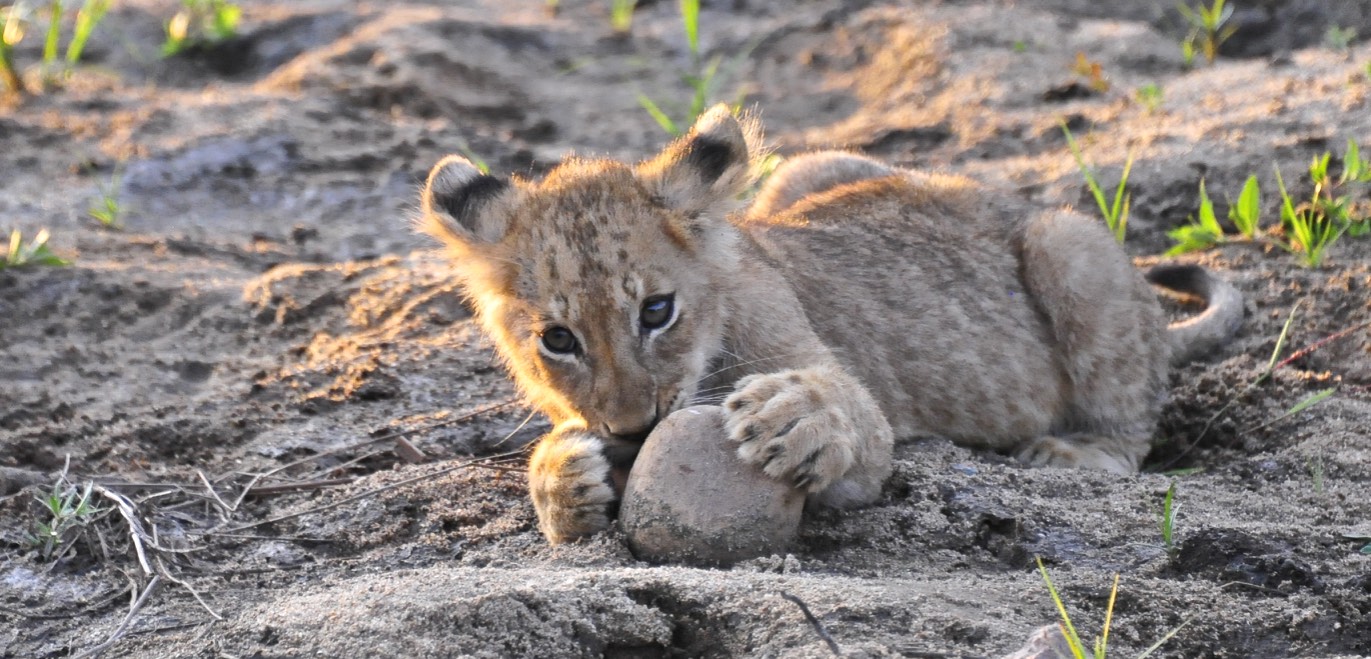The Cost of Cub Petting
Every year, thousands of tourists get caught in the trap that is cub petting. Captivated by the baby lions, tourists readily throw money at lion farms for the chance to get a photo and play with the cute and cooperative cubs. Even celebrities have been drawn in to the practice. Recently, Trevor Noah, a huge South African celebrity and new host of The Daily Show, was photographed with a captive-bred lion. In the caption of the photo, he claimed he was against the breeding of lions for canned hunting, yet he didn’t even realize that most of the cubs and young lions bred for tourist entertainment are sold to canned hunting farms once they reach a mature age. The industry, which makes its profit by allowing visitors to pet and play with baby lions, deceives tourists by telling them that their money benefits the cubs. Instead, our handling of the young lions costs them a great deal. The cubs live a short life, one that is completely controlled by humans.
The cubs used as cuddly tourist attractions are part of a vicious cycle of factory farming. They are taken from their mothers only days after birth, which immediately requires the cubs to rely on humans. Cubs can lose their hair and have other health issues like diarrhea due to the anxiety of losing their mother as well as a lack of natural nourishment. Taking away the cubs also forces the mothers into another osterus cycle so they can have more litters in a shorter amount of time than is natural, sometimes having up to three litters a year. In the wild, a lioness may only produce one litter every two to three years. No matter the care, both the cubs and the mothers are put under extreme amounts of stress after the separation. A human can never replace a lioness.
After the cubs are separated from their mothers, they are used for entertainment purposes. Entertainment often includes bringing the cubs to public places like shopping malls where people to pay for photographs with the tiny lions. They are kept in small cages, usually one containing many at a time, limiting the space to each lion and thus causing a great deal of stress. Even if the conditions are considered good, a cage will never compare to the wild, so no matter the circumstance the cubs are cheated out of a normal life. Cubs are also rambunctious, so in order to keep them well behaved with guests, breeders occasionally beat them into submission. There are even claims that cubs are severely drugged, declawed, and chained for any interactions with humans. When out on excursions with the cubs, breeders often tell paying customers that the lions will be relocated somewhere safe. Instead, they are kept in poor conditions throughout their lifetimes.
What makes cub petting so treacherous are the underhanded ways in which they attract people to their facilities. Many people come thinking that they are helping a ‘sanctuary’, that their money goes towards lion conservation. In fact, most of the money accumulated from practices like cub petting and canned hunting goes directly back to the breeders, which continues the cycle of factory farming. And tourists aren’t the only ones being lied to: thousands of volunteers who wish to work at wildlife reserves are deceived, too. The opportunity to care for cubs makes those facilities more enticing. The lion breeders get volunteers to hand rear these cubs to make them accustomed to human interaction. These volunteers think they are helping the cubs and promoting a better future, but instead these cubs are most often used for canned hunts when they reach an age of maturity.
What many don’t realize is lions cannot be released into the wild after they become dependent on human interaction. They lack the natural instincts gained from growing up in the wild, like learning how to hunt and where they are on the food chain. Even if they do adjust to life in the wild because they no longer fear humans, they can become very dangerous. True lion sanctuaries know this, and in these reputable facilities there is never any direct human-to-lion interaction.
So what is the cost of cub petting? For every cub touched by a human there will be a lion that will never see the true wild. Every cub bred in a factory farm is doomed to a substandard life and a humiliating death. Every cent spent on using lions for amusement adds to the misery we are inflicting on the species. In order to stop this exploitation, we must become responsible tourists. If we see cub petting in practice, we must not add to its dubious success. We must teach travelers from all over the world the cruelty of this industry, because it is their money funding the continued abuse of animals. It is our responsibility to stop these operations, because the cost of cub petting is a life.
-Miranda Gali
Photographs by Dex Kotze


